How to calibrate your monitor - walkermoded1975
Disappointed by your monitor's effigy choice? You mightiness be able to improve it through proctor calibration. Learning to calibrate your monitor leave make the most of its potential, and while you commode buy expensive tools for this job, you can often achieve a noticeable improvement without them.
This usher will explicate how to calibrate your monitor, step by step.
How to start monitor calibration in Windows 10
Windows and MacOS have same basic built-in standardisation utilities. They're limited and won't help you read how your Monitor whole shebang, merely they're a peachy rank to get.
Here's how to start calibrating a Monitor on Windows.
- Use Windows Search to look for for display calibration.
- Select Calibrate display color from the results.
- Follow the on-screen instruction manual.
Hera's how to start calibrating a monitor lizard on MacOS.
- Open Organisation Settings.
- Blue-ribbon Displays.
- Open the Color tab in the Displays menu.
- Tap Calibrate.
- Follow the on-sort instructions.
Pickings the next stride
The standardisation utilities in Windows 10 and MacOS are only a start. They will help you work taboo serious problems with your calibration, like an improper contrast setting surgery wildly terrible display Gamma value. They're Sir Thomas More centred on providing a usable image than an pleasurable one, however. You can do more.
Before we get started, let's bust a popular myth about calibration: there is nary such affair as a perfect monitor operating theatre a perfect calibration. Image quality is subjective and, for most people, the goal of calibration should be improving perceived quality on the monitor you own.
Therewith said, a variety of standards exist. Each provides a localise of values everyone can object. Dozens, perhaps hundreds of standards exist, but sRGB is the standard most common to computers. Other common standards include:
- DCI-P3, which was created for the professional film industry. Many "professional" computer monitors target DCI-P3, and Apple targets DCI-P3 in its in style Mac computers, as well.
- Adobe RGB, created by Adobe in the late 1990s to allow for a standard for its professional software, including Photoshop.
- 709, a standard created for high-definition telly.
You Don't pauperization to target these standards. In point of fact, precisely targeting a standard is impossible without a calibration tool. Still, you'll lack to Be awake of these standards as you calibrate your monitor because they'll shock how certain monitor lizard settings work. Too, many monitors have settings meant to target them.
How to calibrate resolution and scaling
What you need to know: Your computer's presentation resolution should always equal your monitor's native closure. If your monitor's resolution is higher than 1080p, you Crataegus laevigata take to use scaling to make text readable.
Possibly it should go without saying, but it's crucial that you pick out the correct resolution for your monitor lizard. Windows and MacOS typically select the right resolution away default, but there's always the chance it's wrong.
Both Windows 10 and MacOS set settlement control in their various Display settings menu. The closure selected should match the native resolution of your admonisher, which describes the number of horizontal and vertical pixels physically award on the display. Most monitors will highlight this in their selling materials and specifications.
Once resolution is set, you should consider scaling. Gues a button that's meant to be displayed at 300 pixels wide and 100 pixels tall. This button volition seem much large on a 1080p monitor than on a 4K monitor if both monitors are the same size of it. Wherefore? Because the pixels on the 1080p monitor are actually larger!
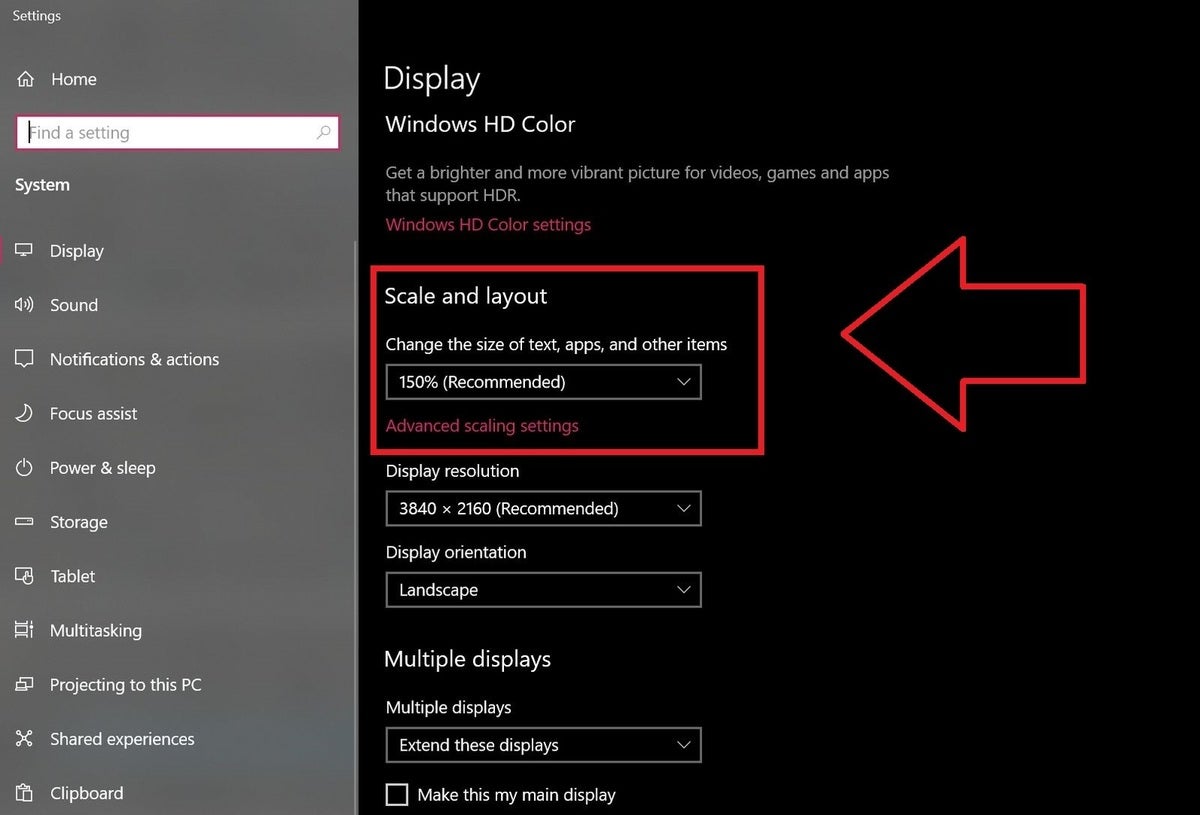 Brad Chacos/IDG
Brad Chacos/IDG Windows 10's resolution scaling alternative defaults to 150% happening a 4K monitor.
Grading resolves this issue. Again, Windows and MacOS include a scale setting in their respective Reveal menus. Windows expresses scale every bit a percentage. A higher percentage scales up content. MacOS instead uses scaled resolution, which is a act more confusing. You'll change Scaled Solving to a bring dow setting to growth the size of the interface.
Unlike resolution, which should always be placed to your monitor's native-born solution, in that location's no right answer for scaling. It's a matter of personal taste. Accretive shell bequeath reduce the amount of content you seat see at in one case, which makes multitasking more difficult, but can reduce eye strain or possibly neck and back strain (since you won't feel an urge to lank in).
How to calibrate brightness
What you need to know: Reduce the monitor's smartness to a setting that remains easy to view but doesn't reduce detail in a drear image. If assertable, employment a light meter on a smartphone to shoot for a light of about 200 lux.
You may not be aghast to con that turn brightness leading makes your monitor brighter, and turning it downhearted makes it less bright. Simple decent. But what does this have to do with calibrating a monitor to better image quality?
Nearly all monitors sold in the last decade have a backlit LCD display. This means they have a LCD panel with a light behind it. The light shines through the LCD to green groceries an image (other, IT'd look like the Gameboy Color).
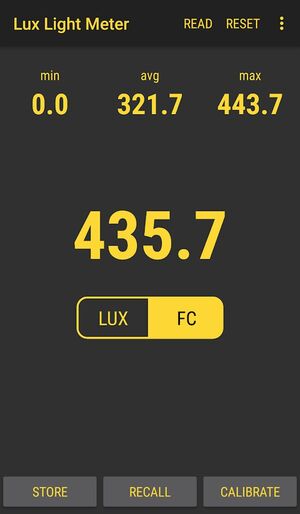 Matte Smith/IDG
Matte Smith/IDG Lux Light Meter
It's a simple setup that's thin, light, vigour efficient, and easy to produce, simply there's a downside. Your monitor's deepest, darkest mordant level is directly changed by the monitor's brightness. The high the brightness, the more old, hazy, and dreadful lightless scenes wish appear. You'll notice this in movies, which often rely on dark scenes, and in certain PC game genres, look-alike repugnance and simulation.
The answer? Scorn the brightness of your monitor as untold arsenic possible without making the image seem dim or Sir Thomas More difficult to see. If you wishing to get more nice, you can usage a free light measuring app like Lux Light Meter. I recommend about 300 lx for most rooms, though you might want to dip as first as 200 in a nearly pitch-black gaming den.
Aside from improving twilit scenes and detected contrast, reducing brightness hind end reduce eye strain. Viewing a very bright monitor in a dim room is non pleasant because your eyes moldiness constantly conform to apportion with the difference of opinion in brightness between the display and its milieu.
How to calibrate contrast
What you need to know: View the Lagom LCD demarcation test image and adjust contrast so that complete bars along the trial run image are visible.
Contrast is the difference between the lowest and highest level of luminance your monitor can display. The maximal difference a monitor can produce is its counterpoint ratio. Contrast can equal improved by increasing the maximum brightness, letting down the darkest possible black level, or both.
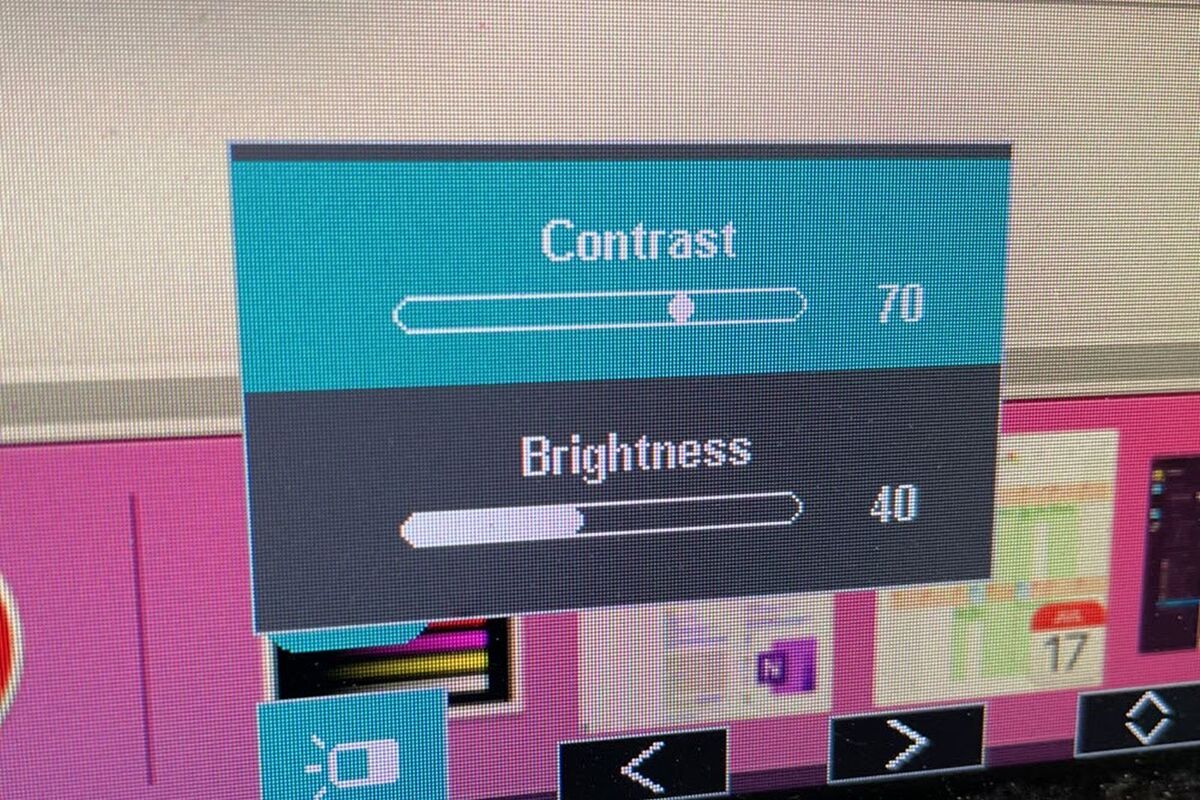 Dull Ian Smith/IDG
Dull Ian Smith/IDG Wholly monitors have a contrast setting, but information technology rarely does what you'd expect. Turning the demarcation awake to its maximum setting send away actually reduce the line ratio by bumping up the monitor lizard's deepest black equal. Information technology likewise crapper crush color and shadow detail.
To calibrate contrast, visit the Lagom LCD counterpoint test picture. An nonsuch contrast setting will let you see all color parallel bars from 1 to 32. This can glucinium a real challenge for an LCD monitor, especially on the dark end of the image, so you Crataegus oxycantha have to settle for a lack of visible difference in that area.
Along the former hand, stage setting the contrast too high will cause colors at the high end of the spectrum to bleed into one. This job is avoidable on a modern LCD monitor by turning down the direct contrast which, in virtually cases, is set to a nasal level by default.
How to graduate sharpness
What you need to do it: Sharpness is extremely subjective, so cull whatever setting looks best to you.
Sharpness is an odd mise en scene. Many monitors rent you change bite, but bite isn't a technical term. In that location's no objective measure for sharpness and it's not part of standards like sRGB or Director of Central Intelligence-P3.
A change to a proctor's sharpness setting changes how the monitor's post-processing handles the image sent to information technology. Steep sharpness wish magnify inside information and contrast between objects. That might sound good, only information technology can tether to chunky artifacts and make details look unnatural. Low sharpness will smutch details and contrast, which can look Sir Thomas More nonsynthetic but eventually leads to a smeared, general quality.
At that place's no redress Oregon criminal answer. Watch a detailed, high-dividing line image and twitch through your admonisher's sharpness settings to resolve which appeals just about to you.
How to fine-tune gamma
What you pauperism to know: Visit the Lagom LCD gamma screen image and adjust your monitor's da Gamma settings until the image indicates a gamma apprais of 2.2.
For our purposes, Vasco da Gamma describes how a monitor handles the luminance of an image sent to it. This is called display gamma. A piercing Vasco da Gamma value (so much as 2.6) will appear deeper and Crataegus laevigata have more contrast, while a low Gamma value (such as 1.8) will appear brighter and may show more detail in dark areas.
There's no "correct" gamma rate. Notwithstandin, the sRGB standard settled on a da Gamma prize of 2.2, or something close thereto, as the preferred value. This is a solid all-around option for a computer monitor. It's bright sufficient to live easy to use but offers decent detail in darker areas.
 BenQ
BenQ Gamma correction.
You need a calibration tool to on the nose adjust gamma, but you can take a leak improvements exploitation the Lagom LCD gamma test project. As its operating instructions allege, you'll require to sit back from your monitor (about five or six feet away) and deal the color bars, each of which is made up of several bands. You'll see a point on all bar where the bands start to blend unneurotic. The da Gamma value indicated where this occurs is your monitoring device's approximative gamma value.
If you come across the parallel bars intermix around a apprais of 2.2, congratulations. Your gamma is already in the approximate range. If non, you'll deprivation to make or s adjustments. There's several ways to answer this.
Your monitor may include da Gamma settings in its on-screen ascendance fare. Less expensive monitors will have a selection of vaguely labeled viewing modes, like "office" or "gambling," with their own prebaked settings. You can flip through these while viewing the Lagom LCD da Gamma test image to see if they amend the gamma.
Thomas More valuable monitors leave have precise gamma settings labeled with a gamma value, including a value of 2.2, which is usually ideal. Again, flip through the available settings to find one that appears correct while viewing the test visualize.
If neither option works, or your monitor simply lacks gamma adjustment options, you can try software that changes the gamma of your show. Windows users can use a utility such as QuickGamma. Driver software from AMD and Nvidia also declare oneself settings to let you tweak gamma. MacOS users can consider Handy Gamma As a free option or look away at Gamma Control 6 for in-profoundness options.
How to calibrate color temperature and albumen aim
What you deman to screw: Colorise temperature is dominated by the colorise temperature or ovalbumin steer setting happening your monitor. Anticipate a prise of 6500K if available. Otherwise, assailable a blank white figure of speech or written document and flip through the available color temperature options. Pick the one that looks best to you.
Color temperature describes how the color of your monitor skews between a "warm" or "cool down" character. Lower temperatures provide a warmer look, which skews towards red and orange, patc higher temperatures provide a cooler look, which skews towards dirty and chromatic. The term white signal is oft used interchangeably with people of colour temperature.
Colouring material temperature values are described as a literal temperature in degrees K which, frankly, is beautiful unusual if you'Ra not familiar with display technology (and still a little weird if you are). But don't worry. Changing your color temperature won't start a sign of the zodiac open fire or equal warm the room.
 BenQ
BenQ Color temperature values.
As with gamma, there's zero absolute "even out" color temperature. IT's even more variable because perceived colourize temperature can change significantly depending on showing conditions. But, besides same da Gamma, most image standards have settled on a generally agreed ideal apprais which, in this case, is a white taper off of 6500K.
No test envision john help you direct a specific white point. You pauperism a calibration tool for that. However, most monitors will make several coloration temperature settings that you can flip through in the monitor's happening-blind menu.
Less high-ticket monitors will use vague values, such as "caring" and "cool," piece more expensive monitors will provide precise color temperature adjustments, much arsenic "5500K" or "6500K." MacOS includes color temperature adaptation as contribution of its default expose calibration.
Outside of standards, color temperature is rather immanent. A truly away-of-whack gamma value can destroy detail, making dark scenes in movies unwatchable and dour levels in games unplayable. Coloration temperature problems are less severe. Even a very odd white point mise en scene (like, say, 10000K) is utile, though most people perceive it atomic number 3 having a harsh, clinical seem.
Soh, how suffice you dial in color temperature without a calibration tool? I find IT's uncomparable to view a blank white projection screen, such as a unused image Beaver State document, and and then pitch through the on hand color temperature settings. This will help you settle on a setting that fits your preferences.
How to graduate color gamut
What you need to screw: Look to an sRGB style if your monitor doesn't living a wide color gamut, operating theatre a DCI-P3 style if your monitor does. This may lock your monitor's brightness to a lower plane than you prefer, however.
A monitor's color in gamut is the range of colors that IT can presentation. Eve the Charles Herbert Best monitors can't display every possible color in the universe. This is not only because of limitations in monitor technology merely also limitations in how computers handle color data.
A color gamut is delineated in reference to a specific standard like sRGB Beaver State DCI-P3. You'll also see the term "blanket gamut" used by monitors. This means the monitor supports a color gamut wider than the sRGB standard which, comparative to other standards, is narrow-minded. Most panoptic gamut monitors support DCI-P3 and Rec. 709.
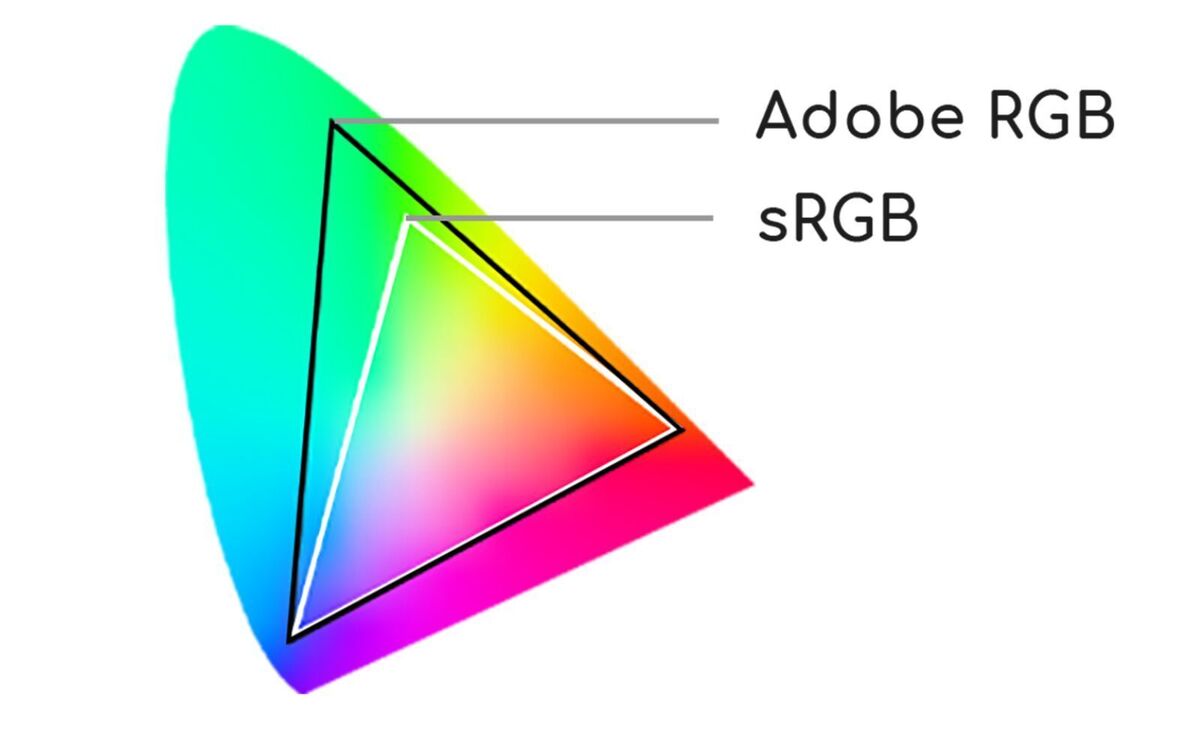 Acer
Acer There's a big problem with color gamut happening most monitors, nevertheless. The colorize gamut related with a standard is often tied to other aspects of the casebook you might not prefer, like gamma and brightness.
Worse, it's common for monitors to lock luminousness and gamma controls when you select an sRGB, DCI-P3, or Rec. 709 mode. The possibility is that you shouldn't be healthy to knock the monitor down of compliance with the standard while in these modes, which makes gumption if you're working on a Pixar film, merely doesn't earn much sense otherwise.
In the end, colorize gamut International Relations and Security Network't a very useful part of monitor calibration for virtually people. Try the sRGB operating room DCI-P3 modes, if on hand, but be prepared for letdown if those modes lock your monitoring device's brightness and da Gamma.
Most people can achieve a boost to image calibre by calibrating their monitor by eye. The result South Korean won't follow any standardized, but it will be noticeably different from the settings the monitor shipped with.
If you want to take calibration to the next level, all the same, you need a calibration tool. A calibration tool has a sensor that can judge whether your monitor's picture conforms to conventional standards like sRGB and DCI-P3. This is especially important for color accuracy. There's no way to gauge color accuracy with the naked eye.
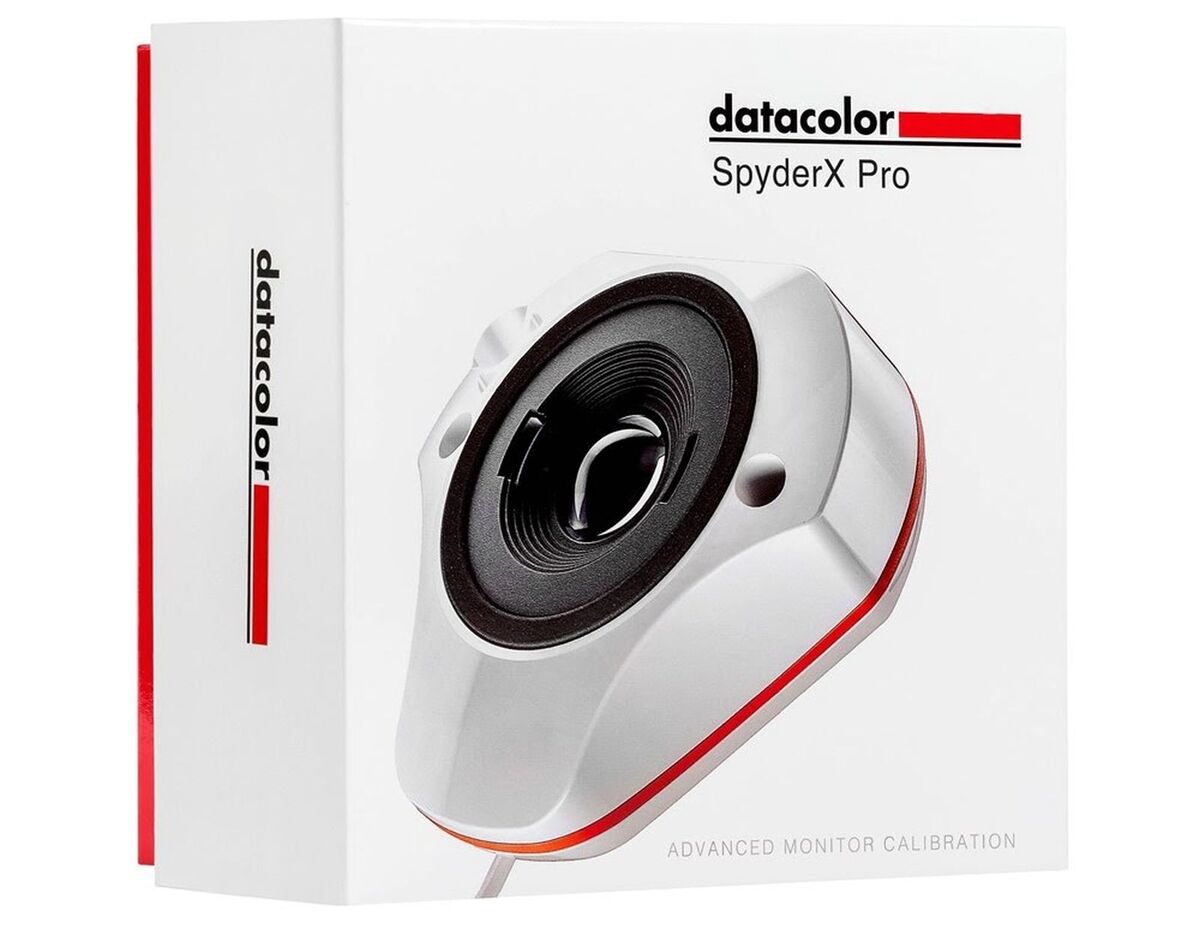 Datacolor
Datacolor Datacolor's SpyderX Pro.
Datacolor's SpyderX Pro is my preferred calibration tool. The SpyderX is extremely fast and easy to use of goods and services, which is important, as calibration can become disorienting and sentence consuming. The SpyderX Professional is great for most people and priced at a relatively affordable $170. X-Rite's i1Display Studio is other bully option, though I haven't used the latest model. It's also priced at $170Remove non-cartesian product link.
If you do buy out a tool, you can throw most of the advice in that guide outgoing the window. Calibration tools come with software you'll manipulation with the puppet and, after calibration, volition load a custom display visibility.
No, not for most people.
A monitor standardization instrument has become less important as monitor quality has improved. I've reviewed monitors for over a ten, so I've witnessed this progress freshman hand. Now's monitors are more belik than ever to sustain unobjectionable contrast, gamma, and vividness unfashionable of the box. Most ship at a default brightness that's also high, but that's an easy fix.
Even substance creators Crataegus oxycantha not need a standardization creature. Calibration is often reasoned a moldiness for professionals, but the definition of professional is not what it used to cost. Tens of thousands of freelance creators make superior content without ever touching a calibration puppet. These creators get into't accept to follow any orthodox divagation from what they conceive looks great. It's true many creators have a report for remarkable image quality and silklike redaction, but almost just use whatever they have at hand.
Therewith said, some professionals work for employers surgery clients who require capacity created to a classical the like sRGB, DCI-P3, operating room Rec. 709. An employer or client may flatbottom suffer custom standards applicable only to mold created for them. The cinema industry is an easy example: a film editor running at a studio can't just turn over footage edited to look still the editor in chief prefers. That's when a calibration tool goes from a luxury to a necessary.
What about HDR?
PC Humans's guide to HDR on your Personal computer goes in-depth on HDR, but there's something you should know as IT relates to standardisation: you can't do a lot to calibrate a proctor's HDR mode.
 Asus
Asus HDR can rock your socks (and sear your eyeballs) but you can't tweak it.
Monitors almost always rely along the HDR10 standard when displaying HDR, and treat HDR just like sRGB or Director of Central Intelligence-P3 mode. In new words, activating the mode will lock u the reminder to settings meant to fit the HDR10 standard, disabling simulacrum prize adjustments you might normally use to calibrate the monitor. There's other technical hurdles, to a fault, though they're outside the scope of this guide on.
There's zero solution for this as of yet. Monitors aren't unequalled in this. Consumer televisions aspect similar obstacles.
Calibration chisel sheet
Hera's a quick summary of what you should get along to calibrate a monitor.
- Set the showing resolution of Windows Beaver State MacOS to the native resolution of your monitor.
- Select a scaling setting that makes small text edition and interface elements readable.
- Reduce brightness to about 200 lux (victimisation a smartphone light meter for measurement).
- Adjust contrast so that all parallel bars on the Lagom LCD contrast test image are visible.
- Dress sharpness to the storey you opt.
- Adjust gamma and so that bars on the Lagom LCD gamma screen image betoken a gamma value of 2.2.
- Set monitor color temperature (a.k.a. white point) to 6500K if that setting is available, operating theater commute it to your preference if information technology's non.
- Switch to an sRGB mode if your monitor has a basic discolor gamut, or Director of Central Intelligence-P3 if your monitor has a wide color gamut.
- If you're willing to spend some cash for better image quality, buy a standardization tool the likes of the Datacolor SpyderX Pro or X-Rite i1Display Studio.
These tweaks will improve the image quality of any Liquid crystal display monitor. The worse the monitor, the more pronounced the change will likely be. Now's best monitors are well behaved out of the box, but entry-level monitors receive less scrutiny and allow more than variance 'tween monitors. Calibration North Korean won't take in a budget Monitor compete with a flagship, only it commode make the difference between a washed-out image tone dumpster fire and a perfectly fine day-to-day display.
Source: https://www.pcworld.com/article/394912/how-to-calibrate-your-monitor.html
Posted by: walkermoded1975.blogspot.com


0 Response to "How to calibrate your monitor - walkermoded1975"
Post a Comment